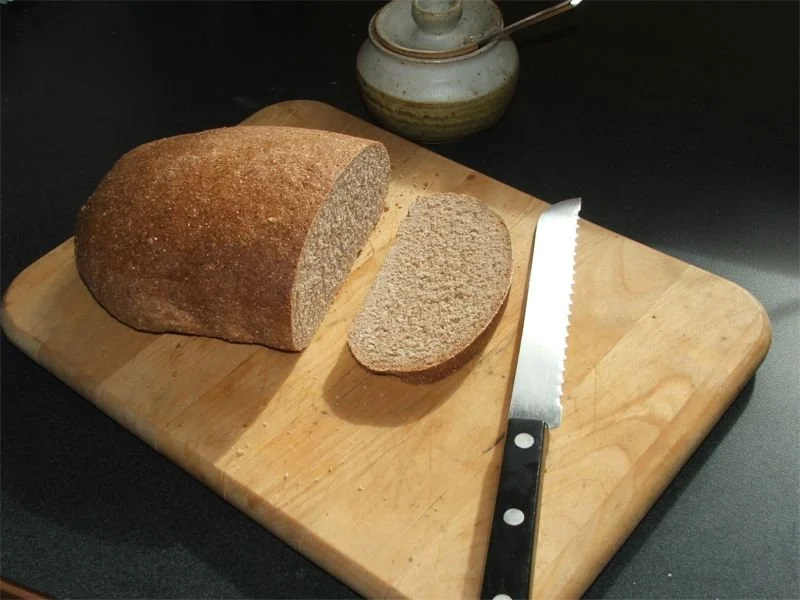The calendar may say April, but since my yard seems to be the last place in Wasilla for the snow to melt each Spring, I decided to try my hand at something new yesterday.
I set out to bake some whole wheat bread from scratch. I have baked my own bread for many years, but this time I decided to try my hand at grinding my own flour.
I have a small steal bur mill that I have used for grinding coffee beans and the grind is adjustable. I tried adjusting the grind as fine as possible.
I found that hard red wheat berries are tough and ended setting the grind a little coarse and running them through the grinder twice setting it as fine as possible on the second grind. It was a slow process and took nearly 30 minutes to get 4 cups of flour. Not as fine as commercial bread flour - but fine enough for me. I would definitely switch to a real flour mill and probably an electric one if I decide to do this very often.
My recipe is based on The Tassajara Bread Book. My well worn copy is one of my favorite baking resources. I wanted the bread to be as simple as possible so I could judge if using fresh ground flour made a significant improvement.
I decided on flour, water, yeast, oil, and salt. I followed the basic whole wheat sponge method with punching down and double rising the dough to improve the gluten and make the bread as light as possible. This is definitely an all afternoon process. I also used their french bread baking method. Adding a water filled pan inside my oven and starting at 400 degrees for 10 minutes then brushing the loaf with more water and lowering the oven to 375 for about 30 minutes. I also place the loaf on a ceramic pizza stone inside my convection oven.
The loaf came out a beautiful golden nut brown without splitting after 30 minutes. I use the finger-snapping test to listen for that distinct hollow sound indicating it is done baking. I cooled it on a wire rack fighting off the urge to cut a slice fresh from the oven.
I really like my convection oven for baking breads and muffins …etc. They seem to rise higher and come out lighter that a regular oven.
Still warm after a cooling for an hour I broke down and had to have a taste. It was not as heavy as I expected and adding the water during baking kept the crust from getting too tough and possibly splitting. It did remind me of the texture in a French baguette with the nutty flavor of whole wheat four. Is grinding flour worth the effort? I believe it is, simply because you are getting all of the nutrients and oils from the wheat berry that quickly oxidize after milling and cause commercial flours to go stale over time.
* Note - I don’t bake with wheat flour much anymore and I am still trying to improve my Almond flour bread recipes.
The nutty flavor and texture was definitely better then many loaves I made from commercial flours. A real flour mill is already on my future wish list. I first saw the Corna grain mill in the Whole Earth Catalog 50 years ago! Using a hand powered mill is not a real problem unless you plan to make large batches of bread at one time. Typical bread recipes call for 4 - 6 cups of flour per loaf and most hand cranked mills will produce about 1/4 cup of flour per minute - or about 16 minutes to make 4 cups of flour. Running the flour through the mill twice is still a good idea. Just one more factor in the slow food movement.






